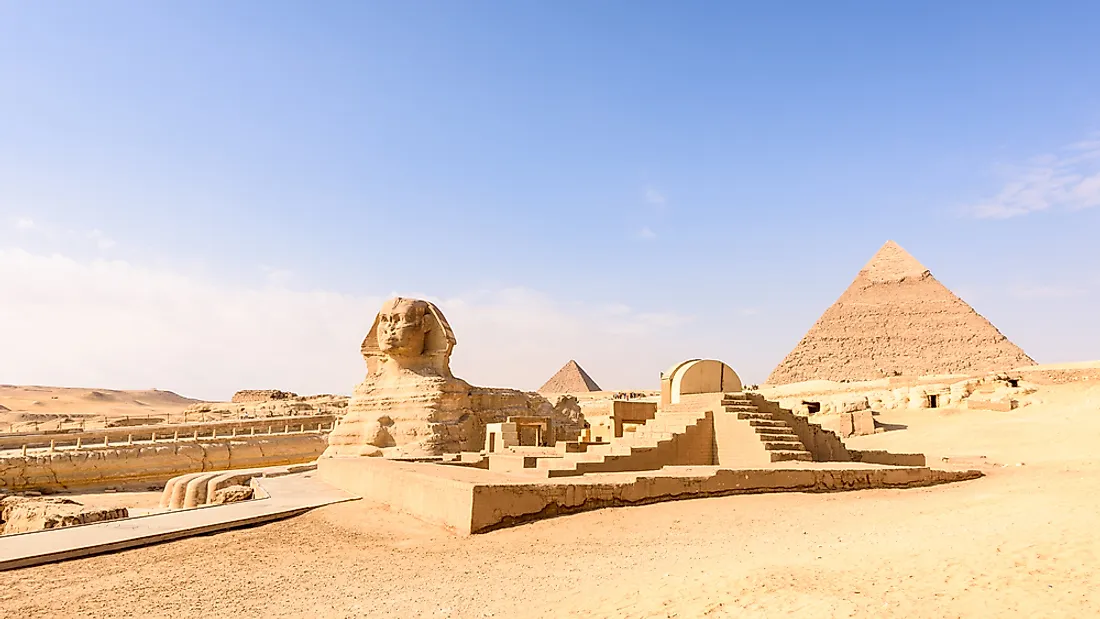What Are The 3 Main Periods Of Ancient Egyptian History?

Ancient Egyptian civilization dates back to approximately 3100 BC, during the Early Bronze Age. The civilization is renowned as one of the world's oldest and longest lasting civilizations, as it existed for nearly 3000 years. The ancient Egyptian civilization was based in North Africa along the lower part of the Nile River. The history of ancient Egypt can be divided into groups of dynasties and kingdoms. The three main "Kingdom" periods of Egyptian history are the Old Kingdom, Middle Kingdom, and New Kingdom.
Old Kingdom
The Old Kingdom of ancient Egypt spanned between 2686 BC and 2181 BC. The period was also known as the "Age of the Pyramids", as it was characterized by the building of the Great Pyramids of Giza, as well as the Great Sphinx of Giza, which is a large sculpture that has the body of a lion and the head of a human, and is believed to represent the Pharaoh Khafre. The Old Kingdom included the Third Dynasty until the end of the Sixth Dynasty, which were considered a period of security and prosperity. This was followed by the Seventh and Eighth Dynasties, which were marked by decline, famine and poverty.
Middle Kingdom
The Middle Kingdom of ancient Egypt spanned the Eleventh and Twelfth Dynasties, and included the rule of Pharaoh Mentuhotep II and Pharaoh Amenemhet III. Mentuhotep II facilitated the reunification of Egypt following its collapse during the First Intermediate Period, and ultimately restoring political order in Egypt. Mentuhotep II also created a large mortuary complex. During this period, the population flourished in terms of art, such as jewelry making, massive construction projects, and trade. Pharaoh Amenemhet III was responsible for two great projects, the giant waterwheels of Faiyum and the Pyramid of Hawara, which was also popularly referred to as the Labyrinth. Towards the end of the Middle Kingdom, Egypt was attacked and defeated by the Hyksos people who had advanced horse-drawn chariots and bronze weapons.
New Kingdom
The New Kingdom of ancient Egypt spanned from 1570 BC until 1544 BC, and marked a period of great political and economic prosperity. Pharaohs conquered significant amounts of land and the Egyptian Empire became large. Rulers that characterized this period included Amhose I, Tuthmosis I, Hatshepsut, Amenhotep III, Akhenaten, and Rameses II. Tuthmosis I was the first Pharaoh to be buried in the Valley of Kings, which became the burial site for Egyptian Royalty for more than 500 years. Hatshepsut was among the most successful female Pharaohs in Egypt and ruled for 22 years. During the reign of Amenhotep III, Egyptian prosperity, power, and art reached its peak, and included the building of the Temple of Luxor, which still exists. Rameses II ruled for 67 years and is believed to have built many monuments.











